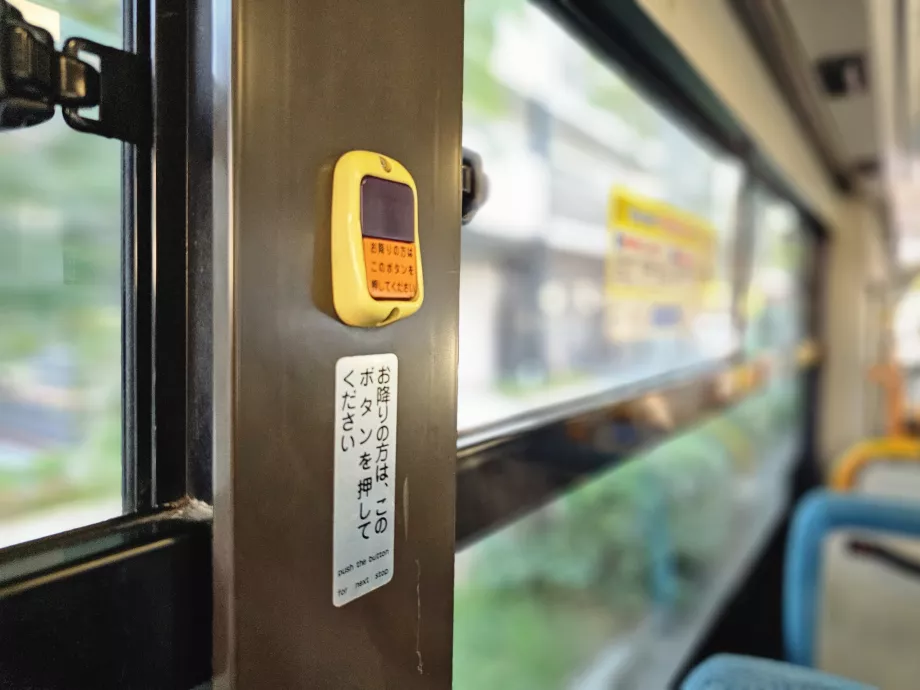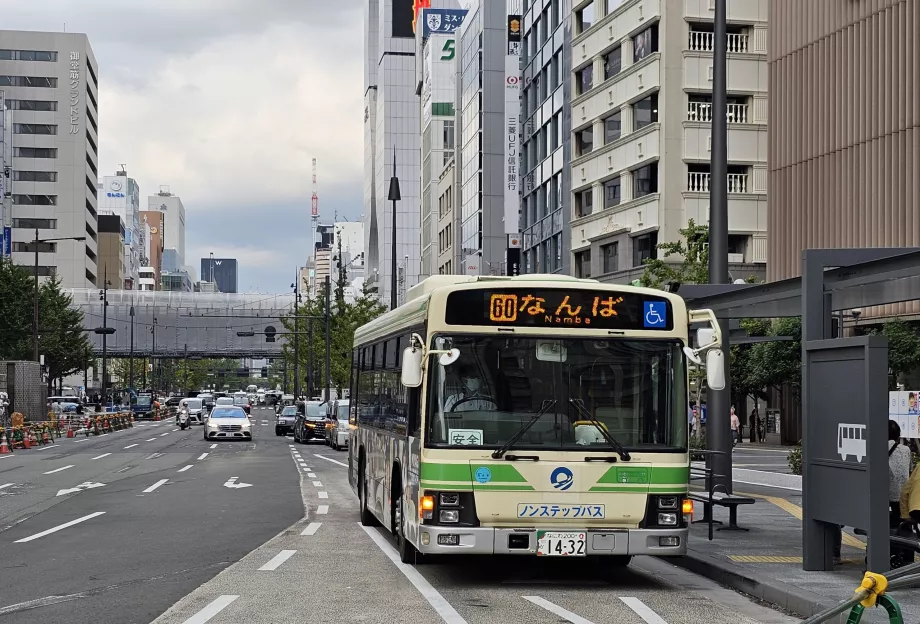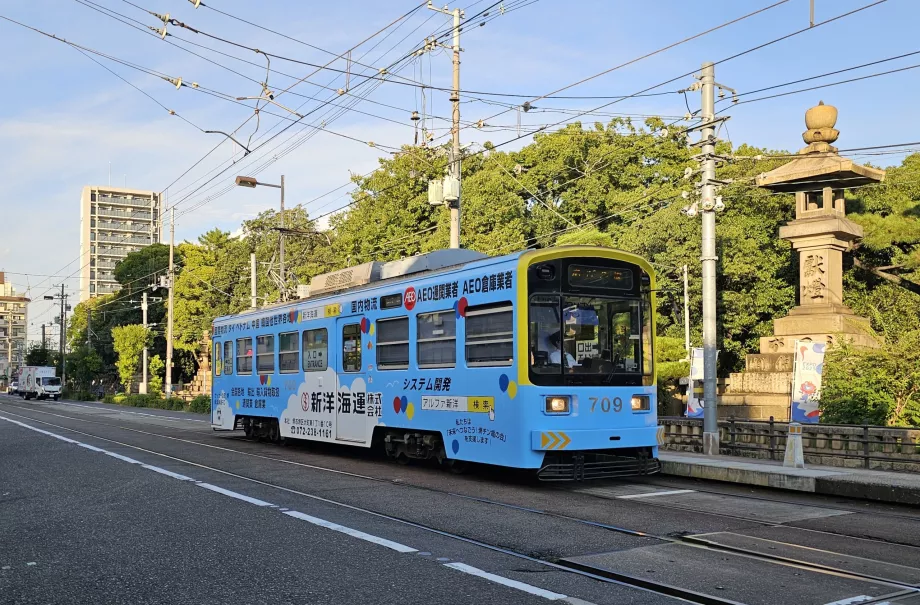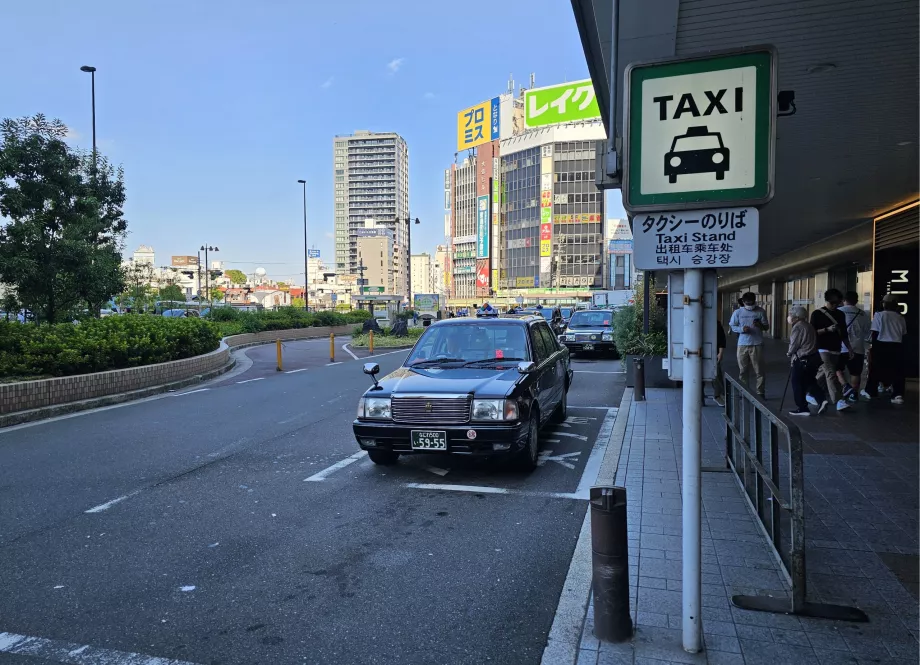Getting around Osaka
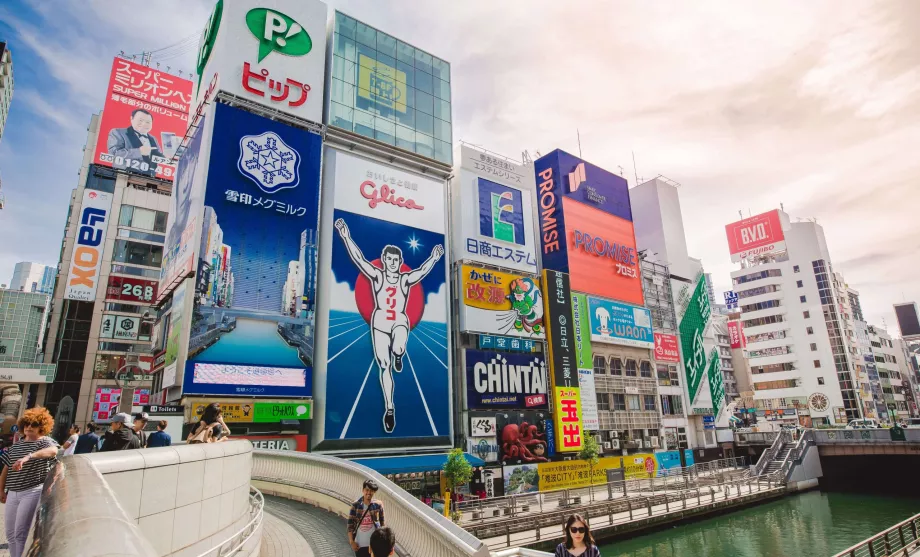
Osaka's public transport network is so dense that, despite its huge population and very wealthy society, there are virtually no traffic jams and far fewer cars on the streets than in similarly developed cities elsewhere in the world.
To get around Osaka you'll use the conventional metro, the state-owned JR trains, many private railways, one tram line and an extensive network of city buses.
You'll mostly use the metro to get to most of the interesting places in Osaka, except perhaps Universal Studios and Sumyioshi Temple, which you'll have to take by train or bus.
Fares and ticket prices
The fare system is different for different transport companies and, especially in the case of transfers or day tickets, it is quite difficult to know which lines a given ticket is valid for and which ones are not.
Day tickets
In Osaka, you can buy the following convenient day and multi-day tickets.
| Price | Validity | Discounts - attractions | |
|---|---|---|---|
| Osaka Amazing Pass | 3 300 jpy - 1 day 5 500 jpy - 2 days |
Osaka Metro Private railways (only in Osaka) City buses (only in Osaka) |
Free (selected attractions) |
| Osaka Metro | 820 jpy - 1 day (working) 620 jpy - 1 day (weekends) |
Osaka Metro City buses (Osaka only) |
Discount approx. 10% |
| Kansai Railway Pass |
5 600 jpy - 2 days |
Osaka Metro Private railways (Kansai region) Trams and some cable cars |
Discount approx. 10% |
Osaka Amazing Pass
A tourist discount card that gives you free admission to some sights, discounts at some shops and unlimited riding within Osaka.
| 3 300 jpy | 5 500 jpy |
|---|---|
| 1 day | 2 days |
The card is always valid for a calendar day only and not for 24 or 48 hours.
It is valid on the following routes, within Osaka only (you cannot use it for travel to Nara, Kobe or any of Osaka's airports, for example) - see map.
- The entire Osaka Metro network
- All city buses (except Universal Stuios shuttle bus)
- Kintetsu Railway
- Hanshin Electric Railway
- Hankyu Railway
- Keihan Electric Railway
- Nankai Electric Railway
Not valid on JR train routes (including JR Osaka Loop city line), Hankai tram lines, Osaka monorail.
On Nankai Limited Express and Kintetsu Limited Express trains, you will pay a surcharge for seat reservation.
When is the Osaka Amazing Pass worth it? When you visit at least three major participating sights in a day and take 3-4 public transport rides, ideally on a combination of the subway and other railways.
Where to buy?
- The Osaka Amazing Pass is only available for smartphone users and can only be purchased online
Official information: osaka-amazing-pass.com.
Osaka Metro 1-Day Pass
The cheapest all-day pass is suitable if you use the subway and city buses a lot and don't visit the attractions included in the Osaka Amazing Pass extensively.
With the all-day subway pass you also get discounts on admission to 30 selected attractions (usually around 10%), see list.
| 820 jpy | 620 jpy |
|---|---|
| Working days | Weekends and public holidays |
The ticket is valid on the calendar day and not for 24 hours.
You don't need to find out which days fall on Japanese public holidays. On those days, the machine will only sell you a discounted ticket for 620 yen.
The ticket is only valid on the following routes:
- All Osaka Metro routes
- Chuo Line - valid as far as Nagata Station, then some trains continue on the tracks of the private Kintetsu Railway.
- Midosuji Line - valid as far as Esaka Station, some trains continue on the Kita-Osaka Kyuko private railway tracks
- All city bus routes
- Exceptions are Universal Studios and IKEA shuttle buses
Where to buy?
- Vending machines at each subway station (cash or Japanese transport cards only)
- Ticket offices in every subway station (card payment is also available at major downtown stations)
If you use one of the 10 Japanese transport cards (Icoca, PiTaPa, Suica, etc.) to pay, there is no daily limit for subway travel. If you will be travelling by subway more than 4 times (3 times on weekends), it is always worth buying a 1-day pass, but you can pay with transport cards.
Kansai Railway Pass
Valid for the whole wide area of Kansai including Kyoto, Nara or Kobe, the railway pass is more suitable for railway enthusiasts.
To make it worthwhile, you would need to make 2 round trips each day on a long route (for example, Osaka - Nara / Kobe / Kyoto) or 1 round trip on a long route and several shorter trips (at least 4-5).
| 5 600 jpy | 7 000 jpy |
|---|---|
| 2 days | 3 days |
The ticket is valid for the calendar days and not for 48 or 72 hours.
In addition to most private railways in Osaka, Kyoto, Kobe and Nara, the ticket is also valid on the Osaka Metro. Conversely, the ticket is not valid on any JR trains (not even the JR Osaka Loop).
The Kansai Railway Pass cannot be used on any bus lines either.
With the subway pass you also get discounts on admission to 30 selected attractions (usually around 10%), see list.
On the Nankai Limited Express and Kintetsu Limited Express, you'll pay a surcharge for reserving a seat.
Where to buy?
- Online at Klook, kkday, waug, see information: surutto.com/kansai
- At many outlets in Osaka, see list
When buying online, you must exchange the voucher for a physical card at any point of sale.
Day tickets on private railways
Most railway operators also offer their own day or multi-day tickets.
These tickets are never worthwhile for traveling only around Osaka, but can be convenient for day trips from Osaka.
For prices and area of use, see the Osaka Metro chapter, which also details the trains.
They can be advantageous with the following carriers, for example:
- Kintetsu - Nara, Yoshino, Kyoto
- Hanshin + Hankai - Kobe
JR Pass
Can the popular Japan Railways network-wide JR Pass or its regional variant, the JR-WEST Pass, be used to travel around Osaka?
The JR Pass or JR-WEST Pass is valid in Osaka exclusively on JR rail lines, so it has no practical meaning for getting around the city.
Book your Osaka hotel in advance
Single tickets
These passes are good for when you want to mainly walk around the central districts, or spend a full day at theme parks like Universal Studios or Kaiyukan Aquarium.
Subway and trains
When travelling by subway or trains, fares are always calculated according to the distance travelled.
On the fare map above each machine, you'll find your destination, with the amount to be paid written underneath.
You then select this on the machine screen and pay.
You can also buy a transfer ticket for other lines, but always within the network of the carrier. You cannot, for example, purchase a single transfer ticket between Osaka Metro and Kintetsu Railway or other carriers.
Prices usually vary between 190 jpy and 420 jpy, see the Osaka Metro chapter for details.
Buses and Hankai tram
On the Hankai bus and tram, there is a flat fare of 210 jpy per trip.
Discounted transfer fares can only be used when transferring bus<->bus or metro<->bus, see in more detail below.
Transport Finder
There is no single search engine for all types of transport in Osaka. You can search either on the websites of the individual carriers, listed below, or via Google.com/maps.
Searching for public transport via Google works well, including displaying accurate prices.
However, Google Maps ignores the differences between the systems.
They will always find you the shortest possible route, but they don't take into account whether the routes are on the same fare. If not, you have to buy a new fare each time you change, making travel more expensive.
Frequent misunderstandings arise especially when using the Osaka Metro 1-Day Pass, which is not valid on rail lines (such as Kintetsu, JR Loop Line, Hansin, Nankai and others).
Metro and railways
The basic transport network in Osaka is 9 subway lines, supplemented by many private and public (JR) suburban railways.
These railways can often be used to get around the city, however single tickets and some day tickets are not compatible with each other.
See the Osaka Metro chapter for detailed information.
Buses
The city's extensive network of buses is ideal for getting around in shorter distances.
While traffic jams are not frequent in Osaka, bus travel is still quite slow due to the huge number of traffic lights.
A complete map of bus routes can be found at: bus.osakametro.co.jp/routemap. Buses normally run from about 5:30am to midnight and the frequency on each line is usually 20-30 minutes.
We always describe useful bus routes for a specific attraction in the What to See section.
Always board through the second door and exit through the driver's door.
You must always press the red "Stop" button before exiting.
How to pay the fare
Flat fares apply on all bus routes 210 jpy.
You can pay in exact cash or with all 10 Japanese transport cards (Icoca, Suica and others). Regular credit cards such as Visa, Mastercard and others cannot be used.
Payment is always made at the driver's exit.
When paying with a card, just hold it up to the reader. If you pay in cash, put the money in the cash box and if you don't have exact cash, you can change a 1,000 yen note in the money changer next to the cash box.
Transfer fare
If you use a transport card (Icoca, Suica, etc.) to pay, the price 210 jpy is valid for 90 minutes with any number of Bus-Bus transfers.
You always get 100 yen off the regular fare when transferring from bus to subway or vice versa.
If you pay in cash, the discounted fare cannot be used.
For detailed information on transfer fares: subway.osakametro.co.jp/fare.
Hankai Tram
There are only 2 classic street tram lines operating in Osaka, which run in the south of the city.
They are mainly used to get to Sumiyoshi Taisha Temple from Tennoji Station or from the Harukas 300 skyscraper.
How to pay the fare
There is a flat fare on both tram lines 210 jpy.
You can pay in exact cash or with all 10 Japanese transport cards (Icoca, Suica and others). Regular credit cards such as Visa, Mastercard and others cannot be used.
Payment is always made at the driver's exit.
Taxi, Uber
Typical black cabs are an extremely popular mode of transportation for locals and tourists alike and are literally ubiquitous.
You can flag down a taxi by waving anywhere on the street and official taxi ranks are also very common, where many taxis are always waiting, often at shopping malls, monuments or metro stations.
Taxi travel in Osaka is very safe and there are no overpriced fare scams.
Taxis can usually be paid for in cash and many taxis also accept regular Visa, Mastercad or American Express cards or Japanese transport cards (Icoca, Suica and others).
Driving is always by meter. Common fares are as follows:
- 660 jpy - first 2 km
- 80 jpy - every additional 296 metres or 1 minute wait (larger taxis have a slightly higher fare)
Usually, you will pay around the same price for a trip across the centre. 2 000 jpy.
Tip
Tipping is not common in Osaka when taking a taxi.
However, you can round the amount up to the nearest ten. If you have to pay 1,900 yen, it's okay to leave 2,000 yen for the taxi driver.
Mobile apps
While there are mobile apps like Uber and DiDi in Osaka, the prices are always the same as for regular taxis and are only calculated based on the actual ride (according to the taximeter).
The advantage, however, is that you can always pay by card when using the apps.
Any questions left?
If you have any questions or comments about the article...



